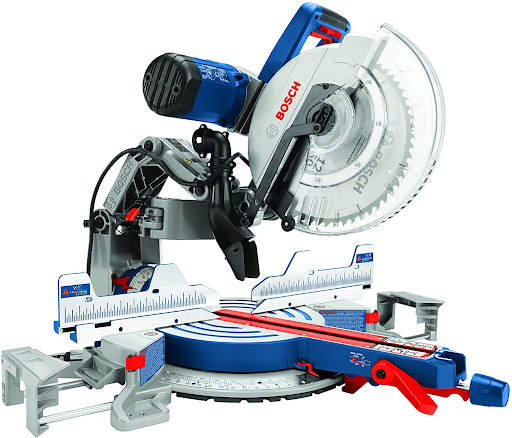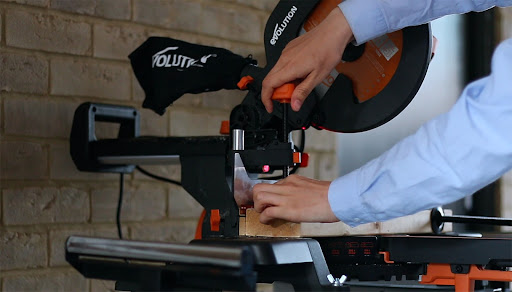The circular saw is one of the most versatile cutting tools you can have in your arsenal as a woodworker.
That being said, there are a number of factors you must take into account to ensure you buy the right circular saw for your specific needs.
Quick Summary
In this post, we will help you determine what your needs are so you can make an informed decision about which circular saw would be right for you.
So without further ado, let’s get started.
What to Look for in a Circular Saw ?

As mentioned earlier, there are a number of factors you must take into consideration before you buy a circular saw.
These factors will help you figure out what you want from your circular saw. Once you have that identified, you can look in the market for the perfect circular saw that fulfills your needs.
These factors are:
Worm-Drive or Sidewinder?
First off, you must decide if you want to buy a worm-drive saw or a sidewinder saw.
Worm-drive saws have their motors behind the saw blade. They use a spiral gear that is positioned at 90 degrees to rotate the saw blade itself.
Worm-drive saws can be great as their narrow bodies allow them to fit into smaller spaces. They provide greater torque during cutting and their weight balance is also superior. That being said, they’re also heavier and more difficult for beginners to control.
Sidewinder saws, also known as direct-drive saws, have the motor on the side of the blade rather than behind it. They weigh a lot less and are much easier to handle. Not only that but they also rotate the blade at a higher RPM compared to worm-drive saws.
That being said, the fact the motor is on the side causes some weight-balancing issues with sidewinder saws. They’re typically weighted more towards the side of the motor which is, of course, to be expected.
We recommend that if you’re a beginner, you should go for a sidewinder saw. However, if you know what you’re doing then you can opt for a worm-drive saw.
Corded or Cordless?
Next, you must decide whether you want a corded or a cordless circular saw.
As you can probably imagine, both of them have their own pros and cons. With a corded saw, you don’t have to worry about the saw running out of battery. This can make it great for longer jobs.
However, the cord itself can cause a lot of mobility and maneuvering issues. Not only that but you can’t use a corded saw anywhere you go. What will you do if you arrive at a job site and find that there’s no electrical outlet nearby?
On the other hand, a cordless saw can be operated anywhere as long as you fully charge it. That being said, that can be a double-edged sword. With a cordless saw, you will always need to worry about the battery and ensure it’s charged before you go out to a job.
Size
When we refer to the “size” of a circular saw, we are referring to the diameter of the saw blade that will be placed inside it.
Different circular saws are typically differentiated into different categories based on their size.
You can consider the following circular saw sizes based on your needs:
- 6.5-inch: These are the most barebones circular saws you can get. While you can definitely get smaller circular saws, we recommend that you don’t go smaller than this if you want to use it for woodworking.
- 7.25-inch: This is the most common size that most people go for which is why they tend to have a lot of accessories available for them. They have a cutting depth of about 2.5 inches.
- 8.5-inch: The cutting depth for this saw is about the same as that of 7.25-inch ones. However, it can definitely cut deeper when you are cutting at an angle. They are much more robust than smaller saws but they also cost more.
- 10.25-inch: These are the most powerful and are the ones you should get if you want a circular saw for professional use. They are fairly expensive, heavy, robust, and difficult to handle. However, they can make short work of most thick materials.
Saw Blade Type
In addition to buying a saw blade for your circular saw that is of the same size, you must also think about the type of saw blade you want to get.
The type of saw blade will depend on what you need it for.
Some great saw blade types you can explore are:
- Crosscut blades: These types of blades have more teeth for making cuts across the wood grain.
- Rip-cut blades: These types of blades have fewer teeth and wide gullets. They are designed for ripping the grain.
- Combination blades: As the name suggests, these blades are designed to do both jobs described above so far. They can make both cross and rip-cuts.
- Specialty blades: These are specialized blades that are designed for performing specific tasks. For example, cutting fine edges, cutting through paneling, etc.
Saw Shoe Material
Most shoes or base plates that you will find for most circular saws are typically made from any of the following materials:
- Cast metals
- Aluminum
- Magnesium
Cast metal, especially cast steel, is the cheapest when it comes to saw shoe material. It gets damaged extremely easily but it’s also super easy to repair compared to the other types.
Aluminum is what you’ll most commonly find to be used in most circular saws found in the market. It’s lightweight and it machines to a flatter surface. It’s typically more expensive than cast metals.
Magnesium has recently started being used more and more for shoe material. It’s the strongest out of the three and is also the most expensive.
Wrapping Things Up…
When you are buying a circular saw, you have a lot to think about.
Browsing online and looking at different circular saws can oftentimes confuse you even more. The trick is to step back and assess your needs first: What do you need your circular saw to do? What tasks should it be able to perform?
Once you answer these questions, you’ll have no trouble finding the right circular saw for yourself.
Visit our page for an overview of what you should buy.

